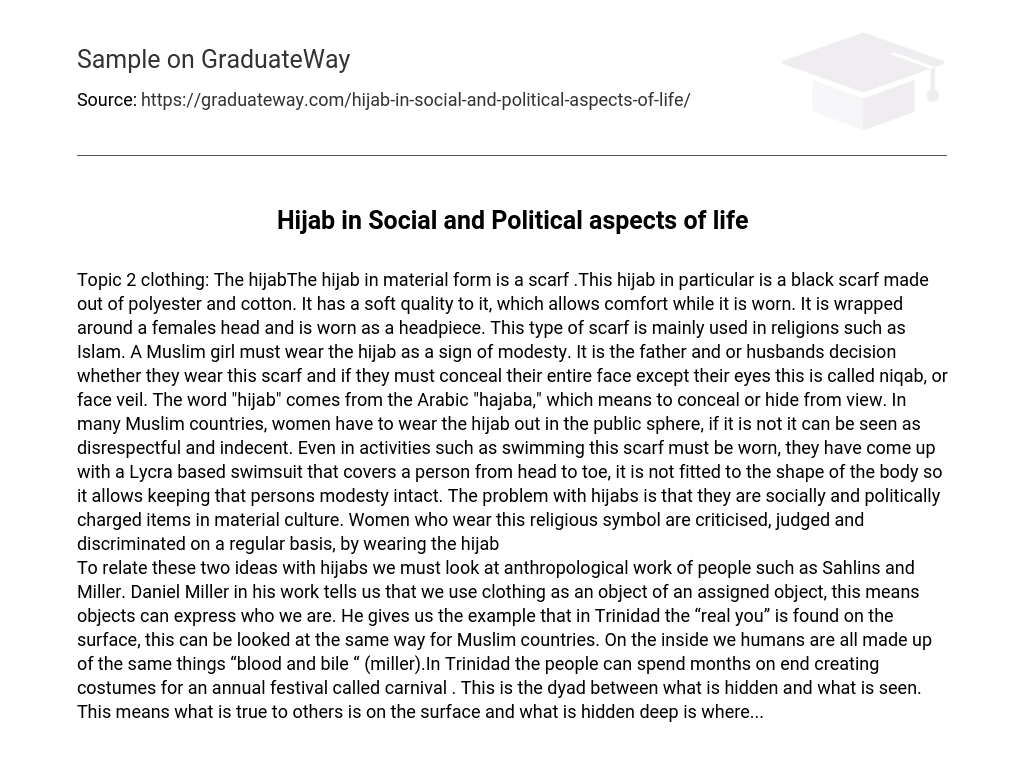Topic 2 clothing: The hijabThe hijab in material form is a scarf .This hijab in particular is a black scarf made out of polyester and cotton. It has a soft quality to it, which allows comfort while it is worn. It is wrapped around a females head and is worn as a headpiece. This type of scarf is mainly used in religions such as Islam. A Muslim girl must wear the hijab as a sign of modesty. It is the father and or husbands decision whether they wear this scarf and if they must conceal their entire face except their eyes this is called niqab, or face veil. The word “hijab” comes from the Arabic “hajaba,” which means to conceal or hide from view. In many Muslim countries, women have to wear the hijab out in the public sphere, if it is not it can be seen as disrespectful and indecent. Even in activities such as swimming this scarf must be worn, they have come up with a Lycra based swimsuit that covers a person from head to toe, it is not fitted to the shape of the body so it allows keeping that persons modesty intact.
The problem with hijabs is that they are socially and politically charged items in material culture. Women who wear this religious symbol are criticised, judged and discriminated on a regular basis, by wearing the hijab To relate these two ideas with hijabs we must look at anthropological work of people such as Sahlins and Miller. Daniel Miller in his work tells us that we use clothing as an object of an assigned object, this means objects can express who we are. He gives us the example that in Trinidad the “real you” is found on the surface, this can be looked at the same way for Muslim countries. On the inside we humans are all made up of the same things “blood and bile “ (miller).In Trinidad the people can spend months on end creating costumes for an annual festival called carnival . This is the dyad between what is hidden and what is seen. This means what is true to others is on the surface and what is hidden deep is where…





